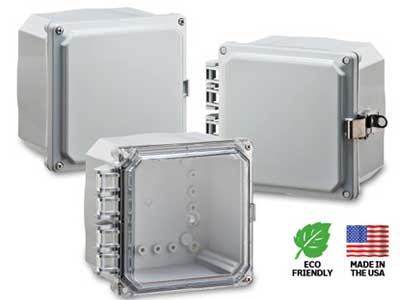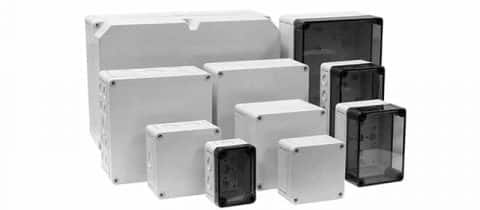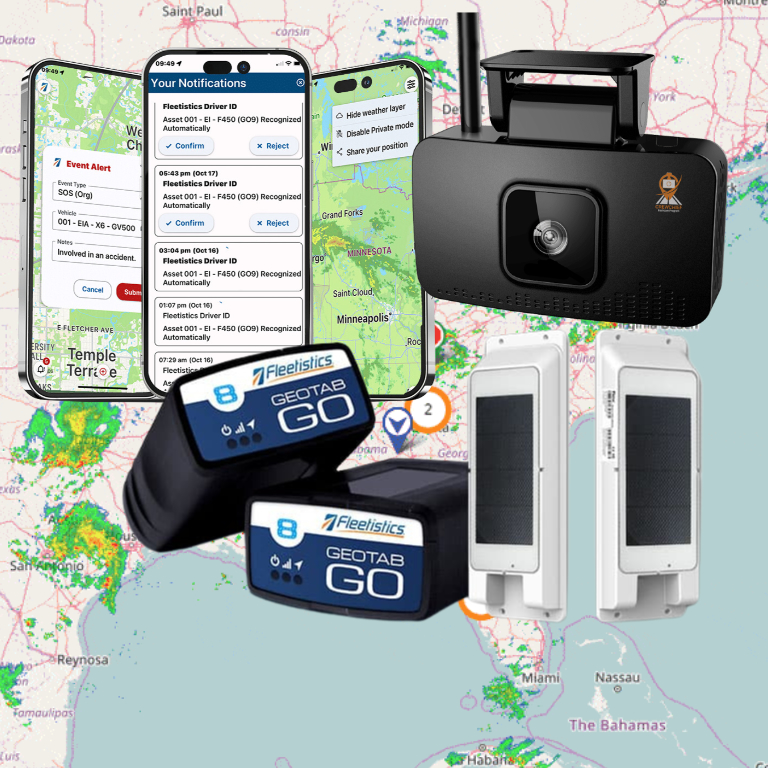Who or what is NEMA?
NEMA is an organization that has developed an international standard for rating electrical enclosures for resistance to various elements. These elements include humans, moisture, debris, fire, temperature, pressure and more, and based on what the enclosure can protect against, it is assigned a NEMA rating. There are a wide range NEMA enclosures available. Indoor, outdoor, weatherproof, cooled, vented, UL listed to name a few.

NEMA Enclosure Rating
Understanding the NEMA rating can save you money in two ways. First, you don’t buy an enclosure with a NEMA rating well above what is needed. The “tougher” the enclosure or the higher the NEMA rating, the more expensive the enclosure. Second, you won’t under buy an the enclosure and lose what you are trying to protect in the enclosure.
For applications related to GPS vehicle tracking a NEMA enclosure from a big box store might be all you need and many are available in the electrical section for under $20. If you need something appropriate for special conditions, there are a number of online and brick and mortar electrical suppliers who can meet your needs.
Basic Enclosure Types from Wikipedia
| NEMA Type | Definition |
|---|---|
| 1 | General-purpose. Protects against dust, light, and indirect splashing but is not dust-tight; primarily prevents contact with live parts; used indoors and under normal atmospheric conditions. |
| 2 | Drip-tight. Similar to Type 1 but with addition of drip shields; used where condensation may be severe (as in cooling and laundry rooms). |
| 3 | Weather-resistant. Protects against falling dirt and windblown dust, against weather hazards such as rain, sleet and snow, and is undamaged by the formation of ice. Used outdoors on ship docks, in construction work, and in tunnels and subways. |
| 3R | As 3, but omits protection against windblown dust. |
| 3S | As 3, but also operable when laden with ice. |
| 3X, 3RX, 3SX | X indicates additional corrosion protection; commonly used near salt water. |
| 4 and 4X | Watertight. Must exclude at least 65 GPM of water from a 1 inch nozzle delivered from a distance not less than 10 ft for 5 min. Used outdoors on ship docks, in dairies, in wastewater treatment plants and breweries. X (as 4X) indicates additional corrosion resistance. |
| 5 | Dust-tight. Provided with gaskets or equivalent to exclude dust; used in steel mills and cement plants. |
| 6 and 6P | Submersible. Design depends on specified conditions of pressure and time; submersible in water or oil; used in quarries, mines, and manholes. 6 is temporarily submersible, 6P withstands occasional prolonged submersion. Neither are intended for continuous submersion. |
| 7 | Certified and labelled for use in areas with specific hazardous conditions: for indoor use in Class I, Groups A, B, C, and D environments as defined in NFPA standards such as the NEC. |
| 8 | Certified and labeled for use in areas with specific hazardous conditions: for indoor and outdoor use in locations classified as Class I, Groups A, B, C, and D as defined in NFPA standards such as the NFPA 70. |
| 9 | Certified and labelled for use in areas with specific hazardous conditions: for indoor and outdoor use in locations classified as Class II, Groups E, F, or G as defined in NFPA standards such as the NEC. |
| 10 | MSHA. Meets the requirements of the Mine Safety and Health Administration, 30 CFR Part 18 (1978). |
| 11 | General-purpose. Protects against the corrosive effects of liquids and gases. Meets drip and corrosion-resistance tests. |
| 12 and 12K | General-purpose. Intended for indoor use, provides some protection against dust, falling dirt, and dripping non-corrosive liquids. Meets drip, dust, and rust resistance tests. |
| 13 | General-purpose. Primarily used to provide protection against dust, spraying of water and non-corrosive coolants. Meets oil exclusion and rust resistance design tests. |











